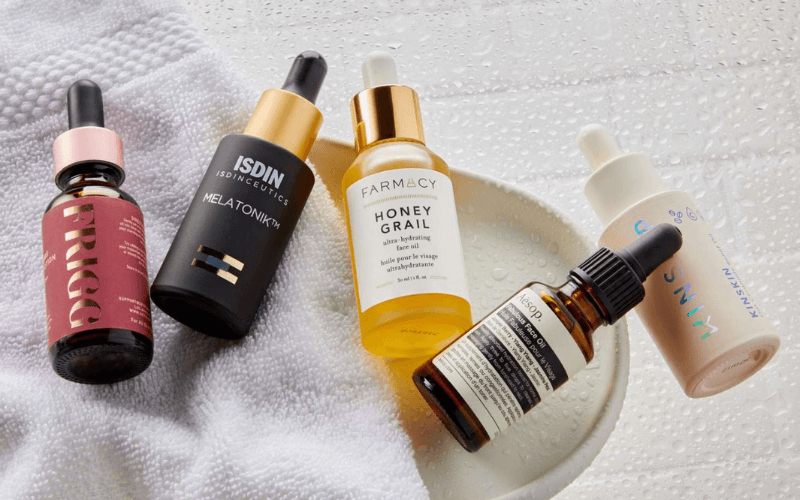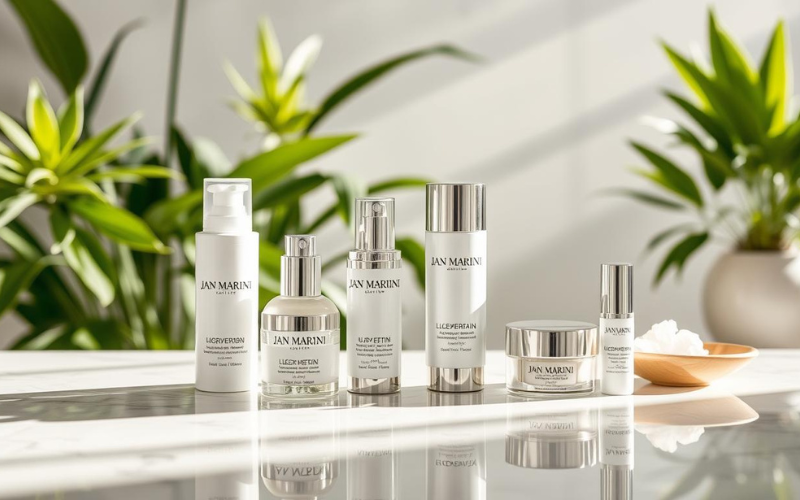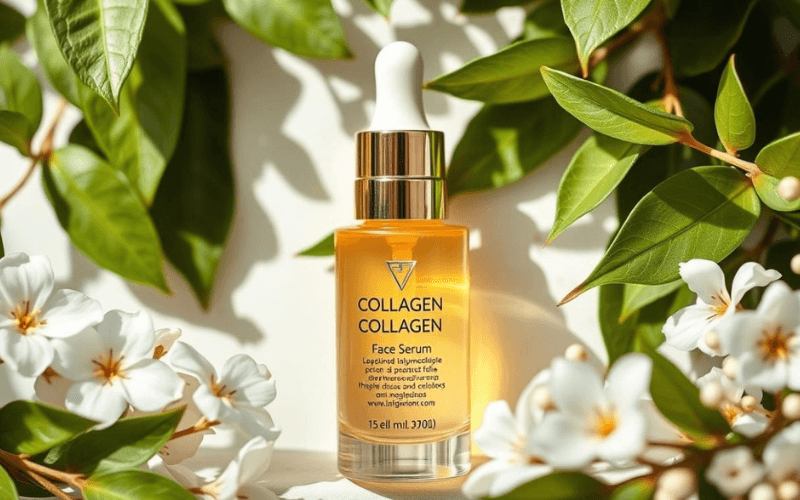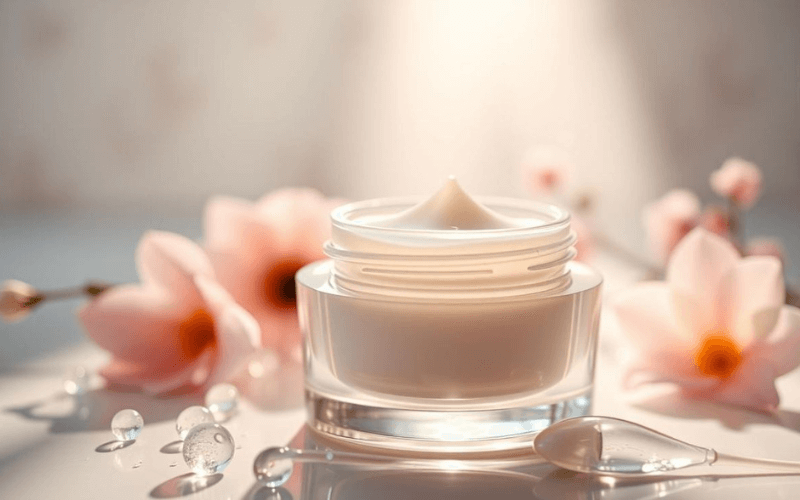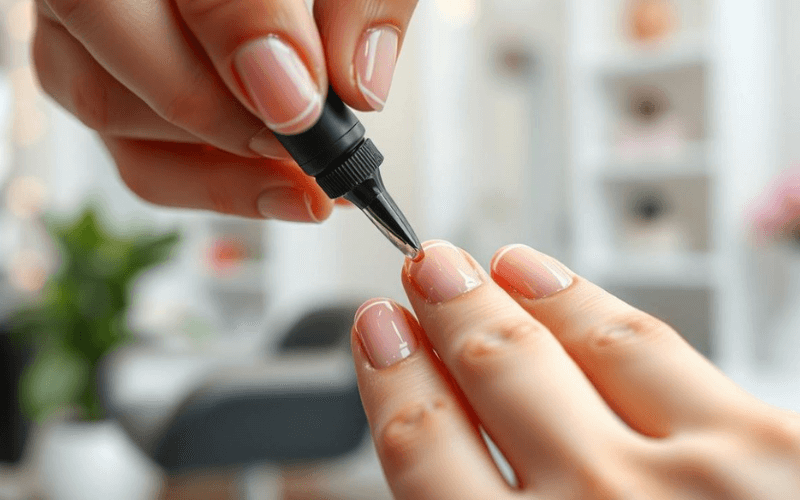Acne scars can be a frustrating reminder of past breakouts, but the right skincare routine can help reduce their appearance and rejuvenate your skin. Among the many solutions available, face oils have gained significant attention for their ability to heal and nourish skin.
In this article, we’ll explore the best face oils for acne scars, explaining how they work, what to look for, and the best products on the market. Whether you’re looking for natural remedies or scientifically-backed oils, this guide will help you make an informed decision and finally say goodbye to those stubborn scars.
- Understanding Acne Scars and How Face Oils Help
- Benefits of Using Face Oils for Acne Scars
- How to Choose the Best Face Oil for Acne Scars
- The Best Face Oils for Acne Scars
- 1. Rosehip Oil: The Ultimate Healer for Acne Scars
- 2. Tea Tree Oil: Nature’s Antibacterial Solution
- 3. Argan Oil: The Liquid Gold for Skin Repair
- 4. Jojoba Oil: The Balancer for Acne-Prone Skin
- 5. Tamanu Oil: The Powerhouse for Deep Scar Repair
- 6. Hemp Seed Oil: The Hydrating Hero for Acne-Prone Skin
- How to Incorporate Face Oils into Your Skincare Routine
- Bonus Tips for Incorporating Face Oils Effectively
- Conclusion
Understanding Acne Scars and How Face Oils Help
Acne scars are caused by inflammation in the skin during the healing of acne lesions. When your skin tries to repair itself, it can produce too much or too little collagen, resulting in either raised or indented scars. Some common types of acne scars include:
- Ice pick scars: Deep and narrow scars.
- Boxcar scars: Wide, U-shaped scars.
- Rolling scars: Wave-like indentations.
- Hypertrophic scars: Raised scars caused by excess collagen.
Face oils are effective for acne scars because they nourish, hydrate, and promote skin regeneration. Many oils are packed with essential fatty acids, antioxidants, and vitamins like Vitamin E and A, which support healing and reduce inflammation. By choosing the right face oil, you can help repair skin damage and fade scars over time.
Benefits of Using Face Oils for Acne Scars
Using face oils for acne scars provides several benefits that make them a popular choice in the skincare community:
- Moisturization: Oils deeply hydrate the skin, which is essential for healing scars. Hydrated skin is more elastic and can regenerate more effectively.
- Antioxidants: Many oils are rich in antioxidants, which protect the skin from further damage by neutralizing free radicals.
- Anti-inflammatory properties: Acne scars are often accompanied by redness and inflammation, which oils like rosehip and tea tree can help soothe.
- Regeneration: Face oils contain essential fatty acids and vitamins that promote cell turnover and skin regeneration, helping to fade scars more quickly.
- Natural ingredients: Unlike some harsh chemical treatments, face oils are often derived from natural ingredients, reducing the risk of irritation.
How to Choose the Best Face Oil for Acne Scars
Not all oils are created equal, and some are more effective at treating acne scars than others. Here are a few things to consider when selecting the best face oil for acne scars:
- Non-comedogenic rating: Oils that are low on the comedogenic scale (meaning they won’t clog pores) are ideal for acne-prone skin. Look for oils with a rating of 0 to 2.
- Anti-inflammatory properties: Oils that reduce inflammation, like rosehip, tea tree, and argan oil, are particularly effective for acne scars.
- Antioxidant content: High levels of antioxidants, like Vitamin E and Vitamin C, help to repair damaged skin and protect against further harm.
- Essential fatty acids: Oils high in omega-3 and omega-6 fatty acids, such as rosehip and hemp seed oil, can promote skin regeneration and improve elasticity.
- Absorption rate: Fast-absorbing oils are ideal for acne-prone skin as they won’t leave a greasy residue or clog pores.
The Best Face Oils for Acne Scars
Now that you understand how face oils can help heal acne scars, let’s dive into the best face oils for acne scars that you can incorporate into your skincare routine.
1. Rosehip Oil: The Ultimate Healer for Acne Scars
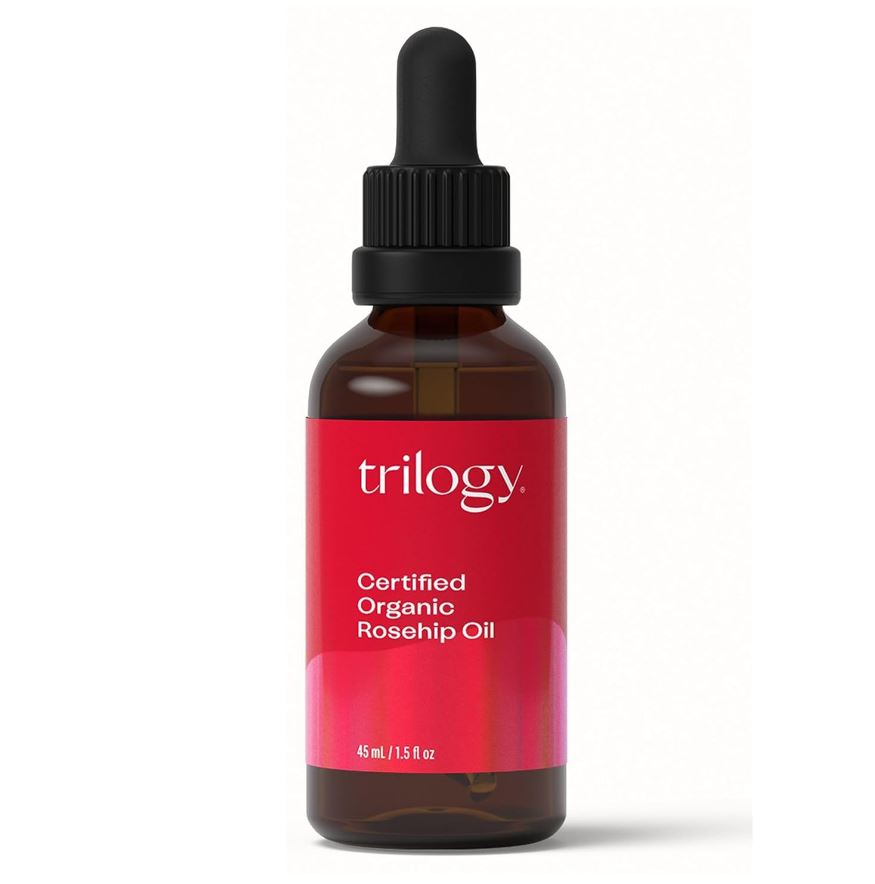
Rosehip oil has gained immense popularity in the skincare world for its incredible ability to heal and regenerate skin. Extracted from the seeds of wild rose bushes, rosehip oil is packed with essential vitamins, antioxidants, and fatty acids, all of which make it a powerhouse for skin recovery. One of its key ingredients is Vitamin A (retinoid), which promotes skin cell turnover, helping to fade acne scars over time.
Rosehip oil also contains high levels of Vitamin C, an antioxidant that brightens the skin, reduces hyperpigmentation, and boosts collagen production. Collagen is crucial for skin repair, especially for scars caused by acne. The oil’s anti-inflammatory properties help reduce the redness and irritation often associated with acne scars.
- Key Benefits:
- Rich in Vitamins A and C for skin regeneration
- Boosts collagen production to repair scar tissue
- Non-comedogenic and safe for acne-prone skin
- Anti-inflammatory properties reduce redness and irritation
- How to Use: After cleansing and toning, apply 2-3 drops of rosehip oil directly to your skin. Gently massage it into the affected areas where you have acne scars. For best results, use it twice a day, in the morning and evening.
2. Tea Tree Oil: Nature’s Antibacterial Solution
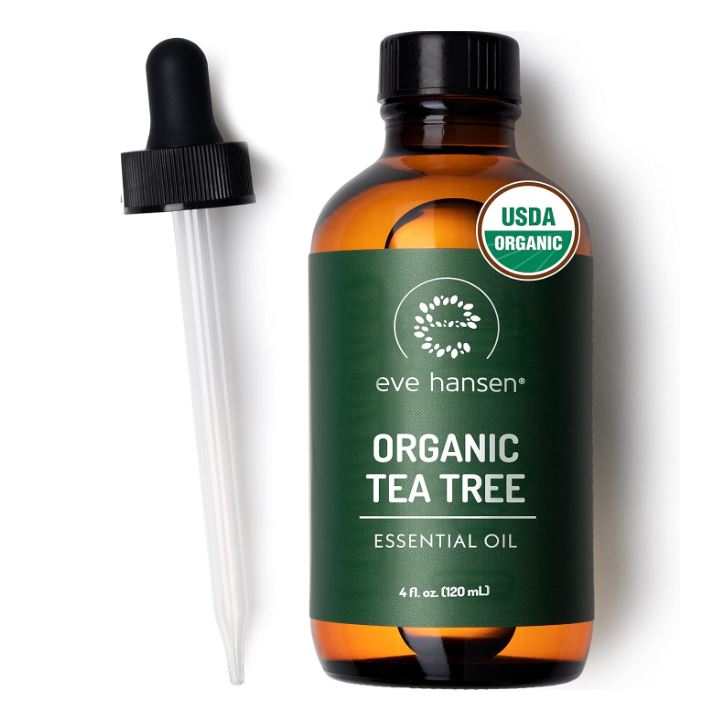
Tea tree oil is well-known for its potent antibacterial properties, making it an effective treatment for active acne as well as the scars left behind. This essential oil, derived from the leaves of the Australian tea tree, works by penetrating deeply into the skin and unclogging pores, which helps prevent future breakouts while simultaneously working to reduce the appearance of scars.
What sets tea tree oil apart is its ability to soothe and calm inflamed skin. Its anti-inflammatory properties make it especially beneficial for people with red, irritated acne scars. Over time, consistent use can help fade discoloration and even out skin tone.
- Key Benefits:
- Powerful antibacterial properties help prevent new acne
- Reduces inflammation and redness from acne scars
- Helps lighten hyperpigmentation and discoloration
- Works effectively when combined with a carrier oil like jojoba or rosehip oil
- How to Use: Tea tree oil is too potent to apply directly to the skin, so it’s best to dilute it with a carrier oil. Mix 2-3 drops of tea tree oil with a few drops of jojoba or rosehip oil, then apply the mixture to the affected areas. Use it once or twice a day for best results.
3. Argan Oil: The Liquid Gold for Skin Repair
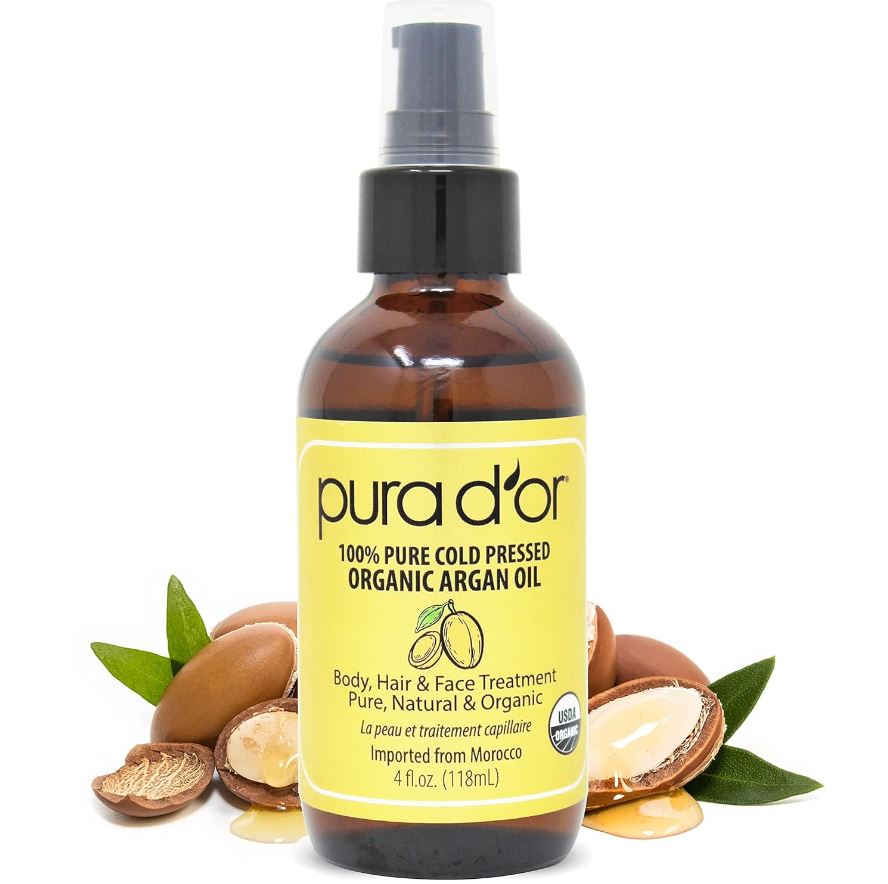
Argan oil, often referred to as “liquid gold,” is harvested from the kernels of the argan tree, native to Morocco. This luxurious oil is packed with Vitamin E, a powerful antioxidant that helps repair damaged skin and fade scars. Its high content of essential fatty acids, including oleic and linoleic acids, helps to moisturize and restore the skin’s natural barrier, improving its texture and elasticity.
One of the best things about argan oil is its non-comedogenic nature, meaning it won’t clog pores. This makes it ideal for people with acne-prone skin who want to treat scars without triggering further breakouts.
- Key Benefits:
- Rich in Vitamin E for deep skin repair and nourishment
- Moisturizes and restores skin’s natural barrier
- Non-comedogenic, so it’s safe for acne-prone skin
- Improves skin texture and elasticity, making scars less visible
- How to Use: After cleansing, apply a few drops of argan oil directly to your skin. You can also mix it with your regular moisturizer for an added hydration boost. Massage the oil into the skin, focusing on areas with acne scars. Use it twice daily for maximum results.
4. Jojoba Oil: The Balancer for Acne-Prone Skin
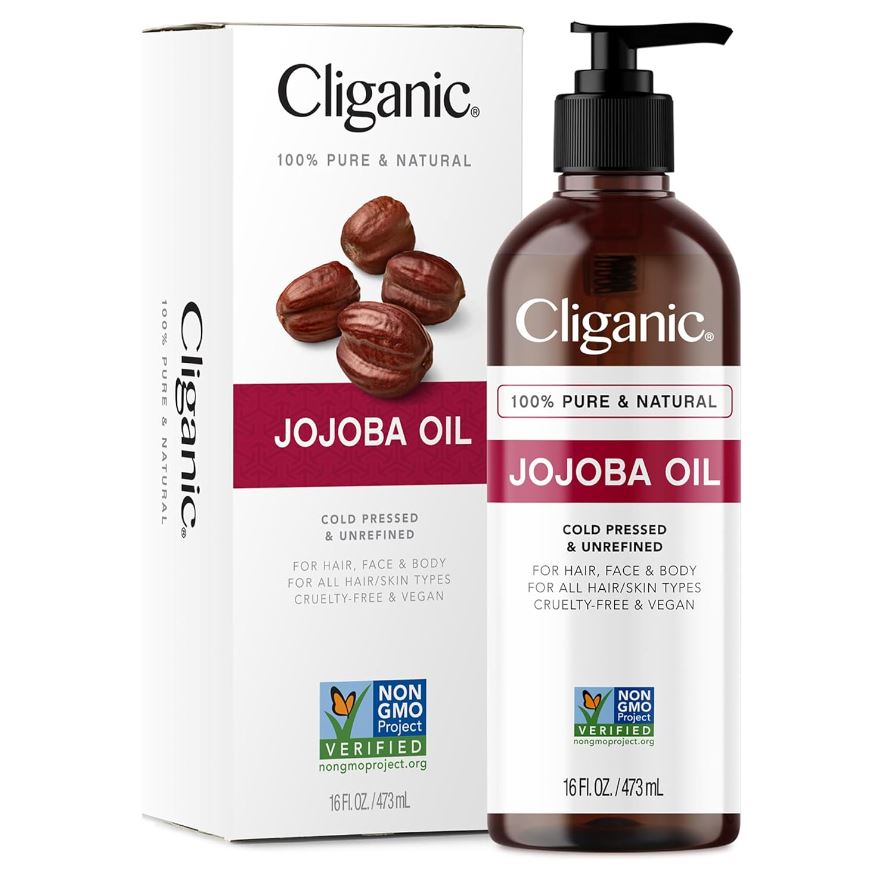
Jojoba oil is unique in that it closely resembles the natural sebum (oil) produced by your skin. This makes it an excellent choice for balancing oil production, especially for people with acne-prone skin. When applied, jojoba oil tricks the skin into thinking it has produced enough oil, thereby reducing excess sebum that can lead to clogged pores and breakouts.
Not only does jojoba oil regulate oil production, but it also has anti-inflammatory properties that help reduce the appearance of acne scars. It’s rich in Vitamin E and B-complex vitamins, which work to repair skin and fade scars over time.
- Key Benefits:
- Regulates natural oil production, preventing clogged pores
- Anti-inflammatory properties soothe irritated skin and scars
- Rich in skin-healing vitamins, including Vitamin E
- Lightweight and fast-absorbing, making it suitable for daily use
- How to Use: Apply a few drops of jojoba oil to clean skin after cleansing and toning. You can also use it as a carrier oil for essential oils like tea tree oil. Massage gently into the skin, particularly on areas with scarring. Use daily for the best results.
5. Tamanu Oil: The Powerhouse for Deep Scar Repair
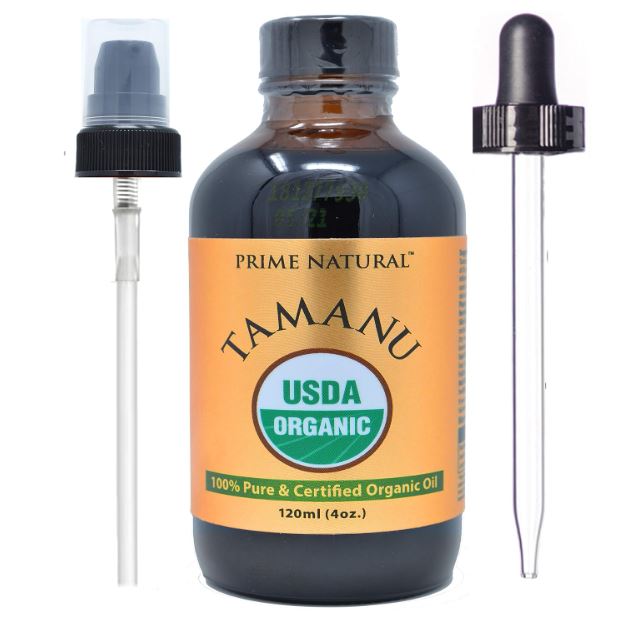
Tamanu oil is less well-known but incredibly effective for treating deep, stubborn acne scars. Sourced from the nut of the tamanu tree, native to the South Pacific, this oil is rich in fatty acids and boasts potent anti-inflammatory, antibacterial, and wound-healing properties. It’s particularly effective at promoting the growth of new skin cells, making it ideal for fading both new and old acne scars.
Tamanu oil is especially beneficial for those with deeper, more severe scars, such as ice pick or boxcar scars. Its regenerative properties make it a popular choice among those looking for natural alternatives to more invasive treatments like chemical peels or laser therapy.
- Key Benefits:
- Stimulates new cell growth, helping to heal deep acne scars
- Anti-inflammatory and antibacterial properties help soothe irritated skin
- Promotes the fading of both new and old scars
- Ideal for deep scars such as ice pick and boxcar scars
- How to Use: After cleansing, apply a few drops of tamanu oil directly to the affected areas. You can also mix it with lighter oils like rosehip or jojoba oil for better absorption. Use daily to see visible improvements in your scars.
6. Hemp Seed Oil: The Hydrating Hero for Acne-Prone Skin
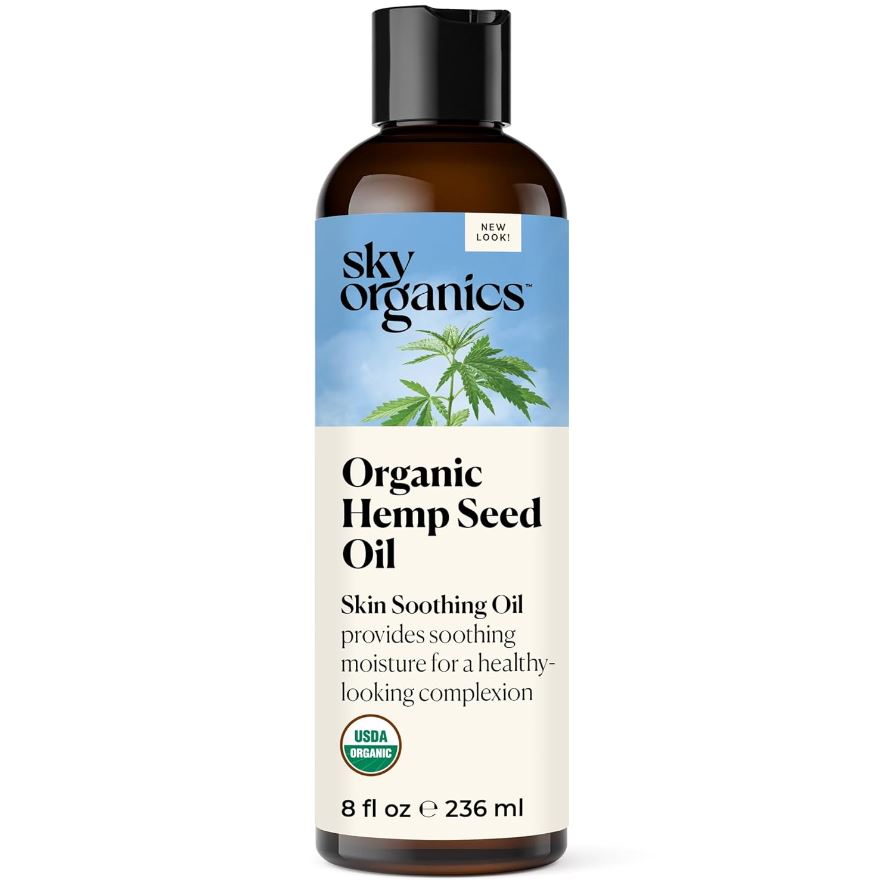
Hemp seed oil is another fantastic option for treating acne scars, especially for those with oily or acne-prone skin. It’s rich in omega-3 and omega-6 fatty acids, which are essential for maintaining healthy skin. These fatty acids help to hydrate and nourish the skin without clogging pores, making hemp seed oil a great choice for reducing the appearance of acne scars while preventing further breakouts.
In addition to its moisturizing properties, hemp seed oil also has anti-inflammatory effects, helping to calm redness and irritation associated with acne scars. It’s lightweight, fast-absorbing, and suitable for daily use, making it a versatile oil for anyone looking to improve their skin’s texture and tone.
- Key Benefits:
- Rich in omega-3 and omega-6 fatty acids for skin hydration
- Non-comedogenic and ideal for acne-prone skin
- Anti-inflammatory properties reduce redness and irritation
- Lightweight and fast-absorbing, making it suitable for daily use
- How to Use: Massage a few drops of hemp seed oil into clean skin after cleansing. You can use it on its own or layer it under your moisturizer for added hydration. Apply it twice daily, morning and night, to see the best results.
How to Incorporate Face Oils into Your Skincare Routine
Incorporating face oils into your skincare routine can be a game-changer for your skin, especially when it comes to healing and fading acne scars. These oils not only provide nourishment but also help balance and rejuvenate your complexion. Here’s a detailed guide on how to seamlessly integrate face oils into your daily routine for maximum benefits:
1. Step 1: Cleanse – Prepare Your Skin by Clearing Away Impurities
The foundation of any effective skincare routine begins with cleansing. A thorough cleanse is essential because it removes dirt, excess oil, makeup, and impurities that accumulate on the surface of your skin throughout the day. Cleansing ensures that your face oil can fully penetrate the skin, maximizing its benefits.
Choose a gentle, non-stripping cleanser suitable for your skin type. For acne-prone skin, opt for a cleanser with ingredients like salicylic acid or tea tree oil to help control breakouts without drying out the skin. Double cleansing, especially in the evening, is a great way to ensure all makeup and impurities are removed.
- Pro Tip: Cleansing with lukewarm water is key. Hot water can strip your skin of its natural oils, while cold water may not effectively dissolve dirt and oil.
2. Step 2: Tone – Restore Your Skin’s pH and Prep for Oil Application
After cleansing, your skin’s natural pH balance can become disrupted, which is where a toner comes into play. Toning helps to rebalance the skin, tighten pores, and provide a clean, refreshed canvas for your face oil.
When selecting a toner, look for one that is alcohol-free and contains soothing or hydrating ingredients such as rose water, witch hazel, or aloe vera. These ingredients will ensure your skin stays hydrated while also calming any irritation or inflammation caused by acne scars.
- Pro Tip: Gently pat your toner onto your face using your hands or a cotton pad, instead of rubbing, to avoid unnecessary irritation. Allow the toner to fully absorb into the skin before moving on to the next step.
3. Step 3: Apply Face Oil – The Key Step for Nourishing and Healing
Now that your skin is cleansed and prepped, it’s time for the star of the show: your face oil. Face oils are packed with essential fatty acids, vitamins, and antioxidants that help to hydrate, regenerate, and protect your skin.
Place 2-3 drops of your chosen face oil onto your fingertips and gently warm it between your hands. This helps to activate the oil and allows for smoother application. Then, press or lightly massage the oil into your skin, focusing on areas where you have acne scars or any areas that need extra nourishment.
Be sure to use upward motions to promote blood flow and improve skin elasticity. Avoid tugging or pulling at the skin, especially in delicate areas like around the eyes.
- Pro Tip: Less is more! Face oils are concentrated, and a few drops are usually enough to cover your entire face. Using too much can lead to greasiness and may cause breakouts, particularly for acne-prone skin.
4. Step 4: Moisturize – Lock in Hydration and Enhance Oil Benefits
After applying your face oil, follow up with a lightweight or rich moisturizer, depending on your skin type. This step is crucial because it helps to lock in the oil and seal in moisture, creating a barrier that prevents water loss and ensures your skin stays hydrated throughout the day or night.
Even if you have oily or combination skin, don’t skip this step! Moisturizing ensures your skin remains balanced, preventing it from producing excess oil, which can lead to more acne. Look for non-comedogenic moisturizers that are oil-free or water-based if you’re worried about breakouts.
- Pro Tip: For extra hydration, try applying your moisturizer when your skin is still slightly damp from the oil. This helps to trap moisture and creates a plump, glowing complexion.
5. Step 5: Sunscreen – Protect Your Skin from UV Damage
If you’re applying face oils in the morning, the final and most critical step in your skincare routine is sunscreen. Sun exposure can worsen acne scars by darkening hyperpigmentation and hindering the healing process. Using sunscreen daily helps protect your skin from UV damage, which can slow down scar fading and increase the appearance of fine lines and wrinkles.
Choose a broad-spectrum sunscreen with at least SPF 30 to protect your skin from both UVA and UVB rays. If your skin is acne-prone or sensitive, opt for a mineral-based sunscreen containing zinc oxide or titanium dioxide, as these are less likely to clog pores.
- Pro Tip: Reapply sunscreen every two hours if you’re spending extended time outdoors. Sunscreen should be applied as the final layer in your morning skincare routine, after face oils and moisturizers, to ensure full protection.
Bonus Tips for Incorporating Face Oils Effectively
- Nighttime Use: Face oils are especially beneficial when used at night, as your skin repairs itself while you sleep. This gives the oils ample time to work their magic without interference from environmental stressors like pollution or UV rays.
- Layering: If you’re using other active ingredients like retinol or AHAs, apply them before your face oil. The oil will act as an occlusive layer, locking in the benefits of your other treatments.
- Patch Test: Always do a patch test before introducing a new face oil into your routine to ensure your skin doesn’t react negatively, especially if you have sensitive or acne-prone skin.
Conclusion
The journey to reducing acne scars can be long, but using the best face oils for acne scars is a natural and effective way to speed up the healing process. From rosehip oil’s regenerative properties to the soothing effects of tea tree oil, face oils offer a gentle yet powerful solution to fading scars and improving skin texture. By incorporating these oils into your skincare routine, you can nourish your skin, reduce inflammation, and say goodbye to acne scars for good. Choose the right oil for your skin type and start your path to clearer, smoother skin today.

